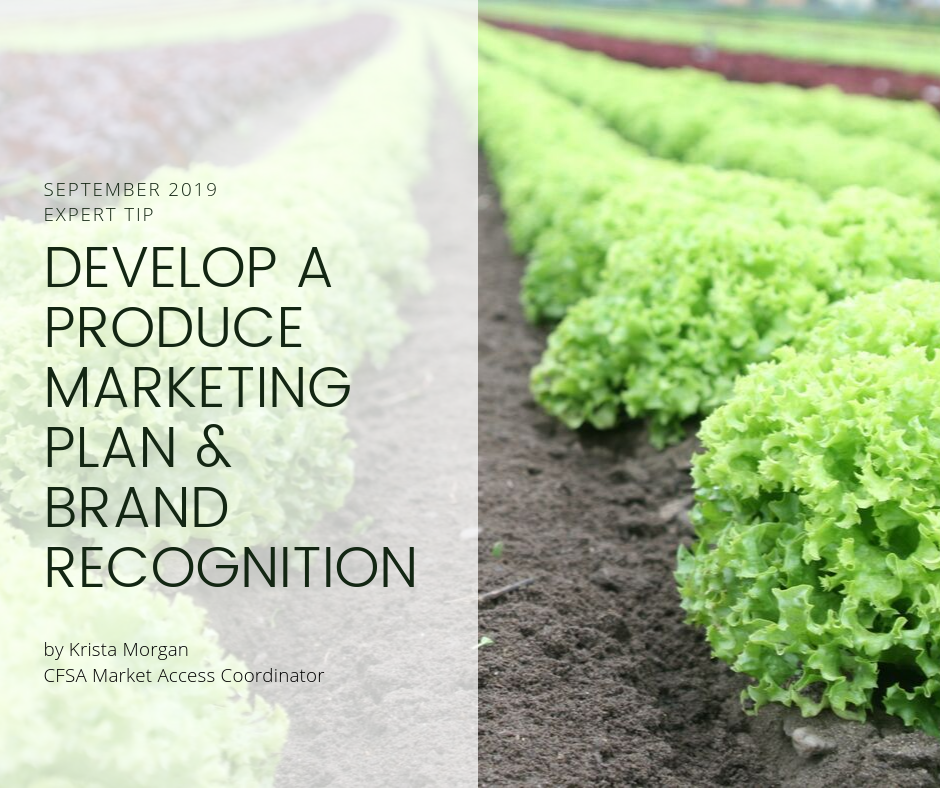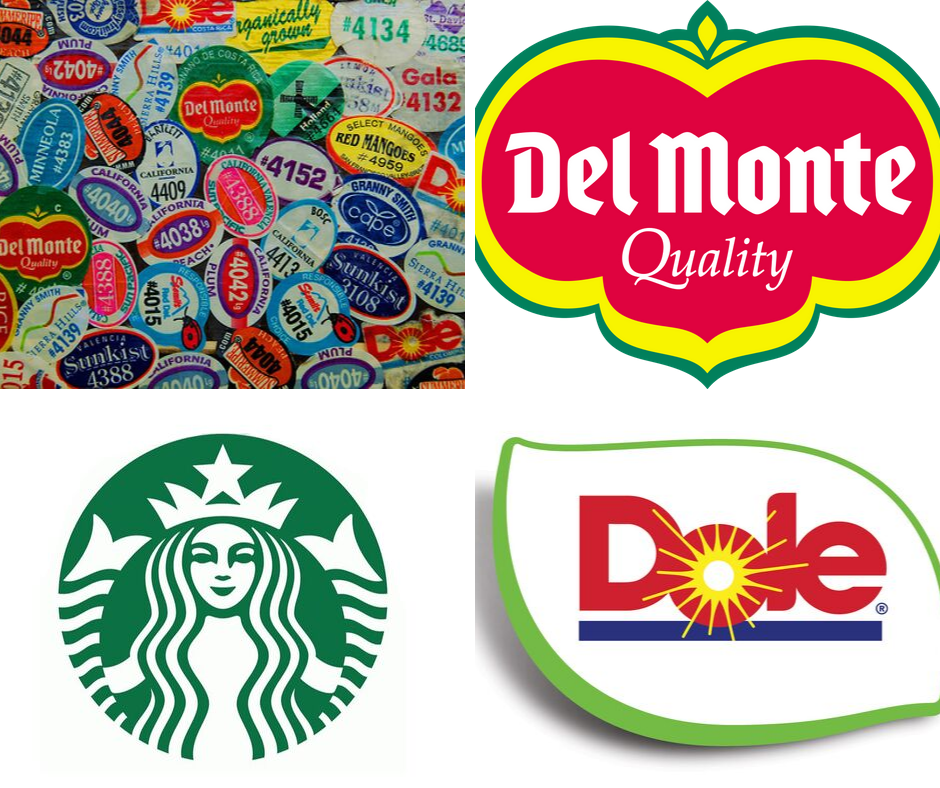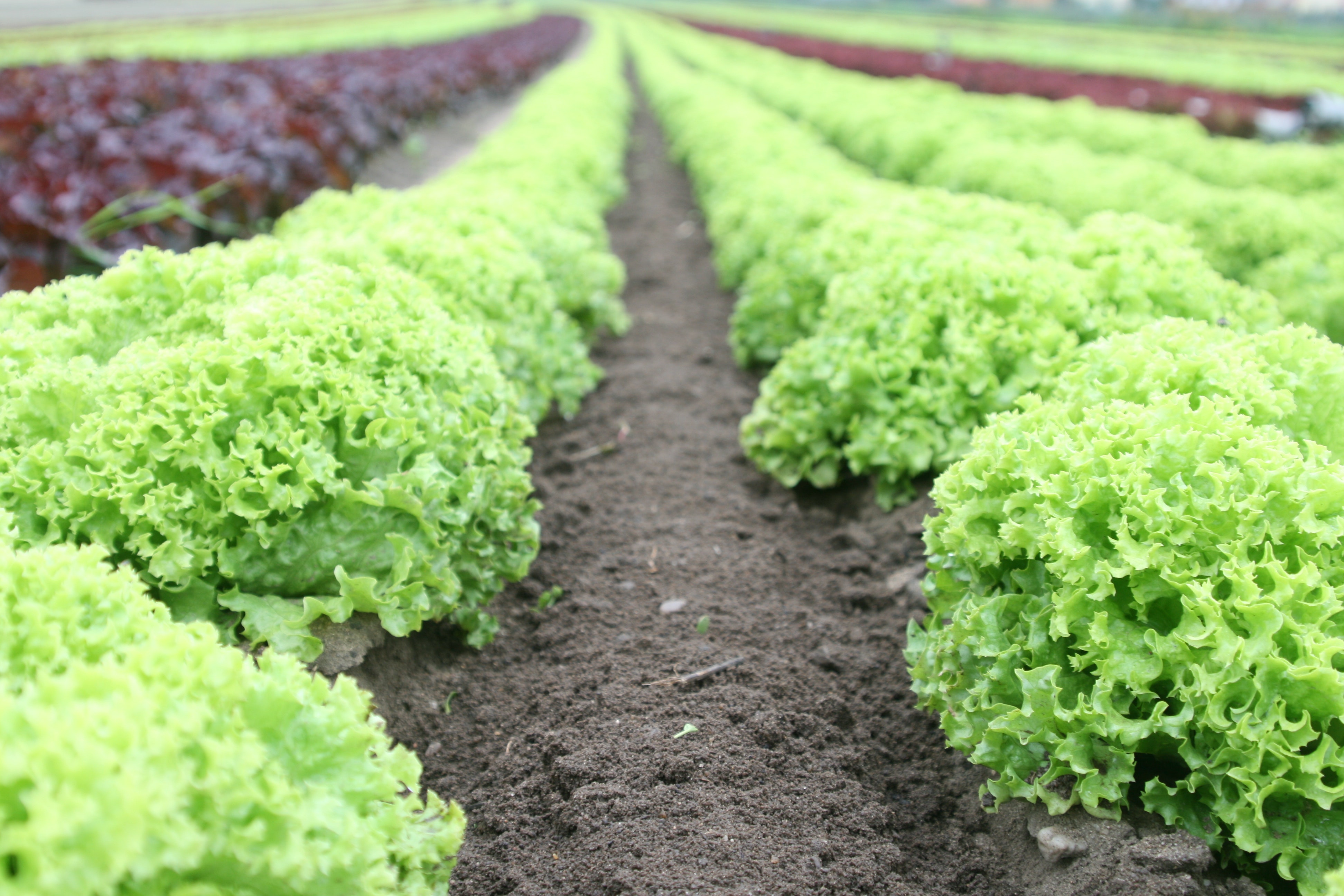by Krista Morgan, CFSA Market Access Coordinator | Monday, Sept. 16, 2019 –

When we hear the words marketing plan, it’s easy to get overwhelmed or think we have to come up with some over the top idea to present to the world. Simply put, marketing is the action of promoting or selling of products or services, which is what we are all trying to do in this industry. Like it or not, we need to learn how to do it. Learning how to successfully market your farm and your produce can get you in the door no matter who you want to sell to. It’s a great way to make a lasting first impression, provide support to your partners, and grow your professional relationships.
Logo
First things first, your farm needs a logo. Logos are how brand recognition is created. A logo should be a distinctive yet practical graphic that conveys an intended message about your farm business; it’s meant to be an identifier of your farm as a standalone image. The test of a good logo is if a customer walked by and saw only the image, would they associate it with your farm?
As you grow, you’ll use the logo on everything—business cards, labels, packaging, cases, PLU stickers, signs, t-shirts, website, social media, event tables, printed advertisements, and beyond. It’s important to keep your logo somewhat simple and easy to print. A logo is not something you will want to change unless absolutely necessary.

The best way to explain the process of forming a marketing plan is by providing an example. Let’s say your farm has the most beautiful head of lettuce that a consumer has ever seen. How do you break through the sea of all the other head lettuces on the market? The essence of marketing is forming a connection or relationship through storytelling with the buyer and the consumer. That way, when the person has walked away, the experience has left an impression they won’t forget. That is a successful marketing campaign. Do you remember seeing a toy commercial as a child and days later still thinking about that toy? That’s the perfect example of where most of us have experienced successful marketing as a consumer.

So how do you create that lasting connection with something as ordinary as lettuce? First off, be confident in your product, and believe in your bones that your lettuce is extraordinary. Next, think of all the dishes—entrees, side dishes, appetizers—that include lettuce. From America’s most iconic sandwich (the cheeseburger) to everyone’s go-to diet meal (the salad), what other vegetables can say that they have comforted you and made you healthy in the same bite? Lettuce is used so much that we take it for granted. We literally put lettuce into our bodies, and you need to advocate for your own lettuce to be the best choice. Don’t we deserve the best quality, grown with the best care, and most nutritious lettuce we can find? That’s how you make lettuce resonate with the consumer.
Visual Aids
Now you’ve got your connection and concept to build your marketing strategy. Most consumers are visual learners, therefore any visual aid you include will help. Supporting graphics may include a child eating a messy cheeseburger or an adult with their post-New Year’s salad. These visuals could be used across all different marketing platforms, such as social media or print ads that could be in mailers, magazines, tri-folds, newspapers, etc. You would want your logo to be in the top left or bottom right corner of every picture. I recommend taking your own pictures or purchasing images to avoid violating any copyright laws.
Now that you have visuals, it is time to create marketing materials such as recipe cards to feature your product. You could have a recipe for a hamburger, salad, or anything else that promotes lettuce. The recipe card should always include your farm name and logo. This is a tool that doubles as a product card AND a business card. This is helpful when you attend food shows because of the size difference compared to a typical business card. Additionally, as you gain traction, you can collaborate with other brands to feature their products within your recipes. Recipe cards are just one example and you can create other materials as you see fit for your products.
Human Interaction
Lastly, and I’d argue the most important part of a marketing plan, is the human interaction for relationship building. Take the time to speak with consumers and let them connect where their food comes from. That’s the key. That is what each person that supports local goes home with, the human connection between you and your lettuce. They know you, the story, your lettuce, and they want to support you, their neighbor. This takes the most time, but I find it’s the most effective in getting loyal customers because you form the strongest connections. Some suggested places would be at farmers markets and retailers/grocery stores, which allow their vendors to set up tables to host sampling events. Give the store manager that carries your product a call and offer to stop by to sample to customers. Work out a time that works best and the location in the store that is most convenient. Ask if there is a local salad dressing vendor in the area that would like to collaborate (if you’re sampling lettuce). If you’re trying to sell to local restaurants, bring samples for the chef and the staff and that should start the conversation.
Marketing goes beyond this article, but I hope this article helps with tips and how to go about coming up with a plan. Keep the concept and thought process simple and let it blossom from there. Once you have all of your marketing pieces completed, bundle them up for a presentation, and I’d be willing to bet your prospective buyers will be impressed!
Questions? Want hands-on help?
Send Krista an email, give her a call at (919) 542-2402 ex. 831, or fill out an online application to get started today!
Krista is available for one-on-one consultations with members about building wholesale capacity–from the farm to market. She can provide guidance on readying growers in selling to wholesale markets, creating distribution workflows, marketing strategies, developing business plans, and helping meet market/consumer demands.


